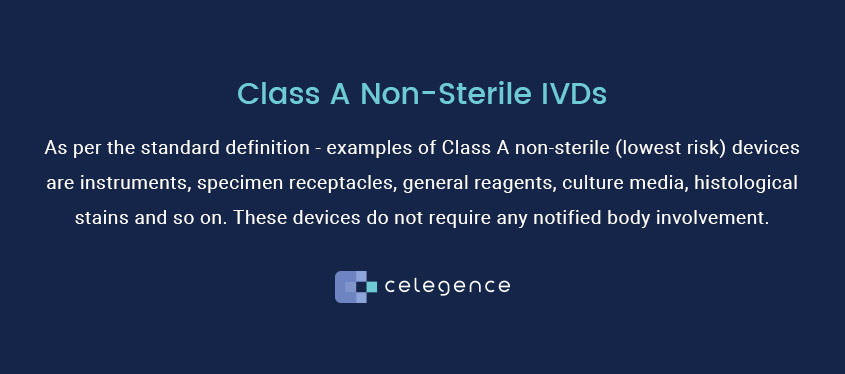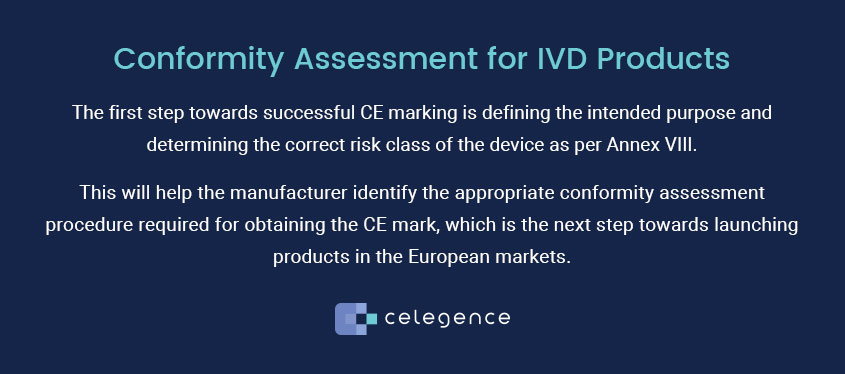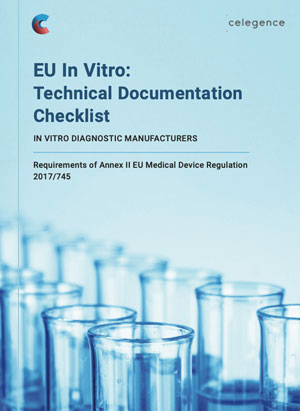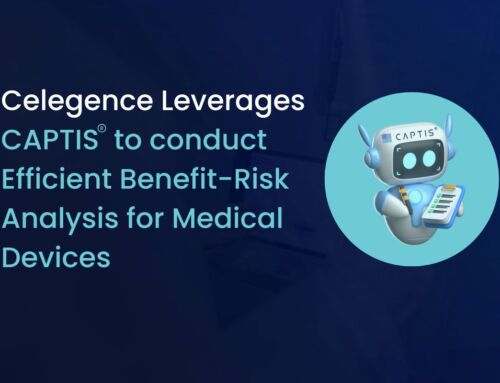
Appropriate Conformity Assessment Route for IVD Products – Introduction
The European CE marking regulation for IVD products, IVDR 2017/746, is all set to be applied on May 26th, 2022. In Annex VIII, the classification rules are set out for IVD products to be placed into one of four risk based classes, A, B, C and D. The classifications depend on the inherent risks, but also the intended purpose of the product. Based on this classification, the manufacturer must then apply for the appropriate conformity assessment route as the next step in the process of getting the product CE marked. This article will allow for an understanding of how conformity assessments should be planned and conducted under the IVDR.
Routes of Conformity for IVDR Devices
According to the IVDR, a conformity assessment is the process demonstrating whether the requirements of the Regulation relating to the device have been fulfilled. Article 48 specifies that:
“manufacturers must undertake an conformity assessment before placing a device on the market. This should be in accordance with the applicable procedures set out in Annex IX, Annex X and Annex XI.”
Thus, these are the routes that are available as options for manufacturers. They can select the most appropriate one and apply for it with their notified body. The decision is again based on the device classification, and is as follows:
Table 1: Conformity assessment procedures based on Risk Class:
| Risk Class | Risk levels | Notified body involvement | Conformity Assessment procedure |
|---|---|---|---|
| Class A non-sterile | Low | Not required | Self declaration |
| Class A sterile | Low | Required | Annex IX |
| Class B | Moderate | Required | Annex IX |
| Class C | Moderate to high | Required | Annex IX or Annex X + Annex XI |
| Class D | Highest risk | Required | Annex IX or Annex X + Annex XI |
Furthermore,
- Annex IX includes QMS assurance which involves QMS certification and technical documentation review. This route is preferred by organizations involved in the design and development as well as the production activities. Here, the design can undergo changes, which are part of the change management system and design controls. This is the route of choice for most manufacturers.
- Annex X is Type Examinations, in which the notified body will conduct both a technical documentation review, as well as physical or laboratory tests on a representative sample of generic device groups. This route is often chosen if the manufacturer has a fixed design for the product.
- Annex XI is the Production Quality Assurance which involves a quality systems audit of the production of the selected device.
The selection of representative samples by a notified body depends on criteria such as the following:
- Novelty of the design
- Impact on patients
- Intended purpose
- Similar technologies
An MDCG guidance document has been published on the criteria used by notified bodies for selecting these representative samples (MDCG 2019-13 Guidance on sampling of MDR Class IIa / Class IIb and IVDR Class B / Class C devices for the assessment of the technical documentation).
Now, what does each respective option mean for the manufacturer?
The checklist highlights all of the documentation that you will need in place for certification of your IVD device and will serve as a guide to help you achieve ongoing compliance. In conjunction with this checklist, we are also able to provide you with bespoke strategies to bring your business up to speed. We are currently working with businesses from the United States, India, and throughout Europe to ensure that they are ready for the deadline in May of 2022.
Class A Non-Sterile IVDs
As per the standard definition – examples of Class A non-sterile (lowest risk) devices are instruments, specimen receptacles, general reagents, culture media, histological stains and so on. These devices do not require any notified body involvement.
- The manufacturers must draw up the technical documentation as per Annex II and III.
- They must also show conformity to the GSPRs (general safety and performance requirements) outlined in Annex I.
- Lastly, they must meet all the other critical obligations under the IVDR.

Class A Sterile Devices
According to the standard definition – examples of Class A sterile devices can be sterile Microbiology media, sterile buffers and solutions. For these devices, manufacturers must follow all the above requirements. The difference here is that the notified bodies are involved, but the involvement will be limited to the QMS review according to Annex IX and production QA as per Annex XI. This is where only the sterilization activities will be reviewed i.e., how the product sterility is established, secured, and maintained. These will be audited and reviewed.
Class B Devices
There is a diverse range of products that fall under Class B by definition. Accordingly, this includes devices not covered by other classification rules. It also includes clinical chemistry tests and some self testing IVDs like urine dipstick tests for bacteria in urine, cholesterol tests, and many more.
Manufacturers of Class B devices have only one option, and they must apply for the Annex IX route.
- They must comply with Annex IX Chapter I requirements for QMS, which will be certified by the notified body.
- They must also comply with Annex IX Chapter II requirements for technical documentation. The notified body will review the technical documentation of one representative device for each category of devices, and the category of the device is based on the IVR codes.
- For Class B self tests or near patient tests, there are some additional requirements in Annex IX, Section 5.1, and all of these devices will be audited. In this case, a product specific certificate will be issued by the notified body.
Class C Devices
The definition for this class of devices includes products for testing transfusion or transplantation compatibility. It also includes all infectious agents tests, cancer testing, genetic testing, companion diagnostics, prenatal testing, cancer screening tests and many others. The level of scrutiny by the notified bodies is far more intensified for Class C devices.
Manufacturers have two options:
- Annex IX route,in which they must comply with:
- Annex IX Chapter I – QMS
- Annex IX Chapter II Section 4 – Assessment of technical documentation for at least one representative device of each generic group
- Annex X + Annex XI route (combination) in which:
- Annex X is a Type Examination (technical documentation review as well as physical or laboratory tests on a representative sample of generic device groups)
- Annex XI Production Quality Assurance (which involves a quality systems audit of the production of the selected device)
- For Class C self tests and near patient tests, no sampling of devices will be done by the notified bodies, meaning all devices will be audited. Thus, the manufacturers must comply with the requirements in Annex IX Section 5.1.
- For Class C Companion diagnostics, every device will be audited and the notified body will consult with the EMA or any other competent authority designated by Member States. The manufacturers must also comply with requirements in Annex IX Section 5.2.
Both Article 2 of the IVDR and the MDCG guidelines define what is meant by generic devices, and it is as follows:
“generic device group means a set of devices having the same or similar intended purposes, or a commonality of technology allowing them to be classified in a generic manner.”
Class D Devices
In the final definition available is the highest risk class, and these devices include tests for highly transmissible and life threatening agents like HIV, HBV, HCV or syphilis, blood grouping reagents and kits, and others. The level of scrutiny by the notified bodies is far more intensified for Class D devices.
Manufacturers have two options here:
- Annex IX route for which they must comply with:
- Annex IX Chapter I – QMS
- Annex IX Chapter II Section 4 – Assessment of technical documentation for each device
- Annex X + Annex XI combination route in which:
- Annex X is Type examination (technical documentation review, as well as physical or laboratory tests on the devices)
- Annex XI Production Quality Assurance (which involves a quality systems audit of the production of the devices)
There are some additional requirements for Class D devices that are implemented irrespective of the option chosen. As part of their conformity assessment, Class D devices will also undergo EU reference laboratory testing, where the EU reference labs will test for all the performance claims made by the manufacturer to a CS (common specifications), harmonized standard, or any other standard provided by the manufacturer. If no common specifications are available, an expert panel will be consulted. Further, Class D devices will be subject to batch verifications of each batch that is manufactured, meaning the notified bodies will review QC data and documentation before each batch can be released.

Conformity Assessment for IVD Products – Conclusions
The first step towards successful CE marking is defining the intended purpose and determining the correct risk class of the device as per Annex VIII. This will help the manufacturer identify the appropriate conformity assessment procedure required for obtaining the CE mark, which is the next step towards launching products in the European markets.
The checklist highlights all of the documentation that you will need in place for certification of your IVD device and will serve as a guide to help you achieve ongoing compliance. In conjunction with this checklist, we are also able to provide you with bespoke strategies to bring your business up to speed. We are currently working with businesses from the United States, India, and throughout Europe to ensure that they are ready for the deadline in May of 2022.



